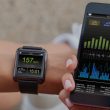Motorola demonstrates public-safety LTE capability in Philadelphia
Motorola Solutions demonstrated the ability to prioritize multiple video streams automatically during a recent 700 MHz LTE demonstration conducted in the Philadelphia area.
Conducted at the Philadelphia Police Academy and attended by public-safety officials throughout the region, the two-day demonstration featured mobile streaming video from a dash-mounted camera in a squad car that was connected via a Band 14 Motorola dongle, said Rishi Bhaskar, vice president of private broadband sales for Motorola Solutions. In addition, video from two fixed cameras — tied to the temporary network via wired connections — was transmitted to a "mock command center" utilizing dynamic prioritization, he said.
"One of the things that was a little different was the ability to show an integrated interface — via our real — time video intelligence [RTVI] application — of mixed video streams," Bhaskar said. "We had a mobile video stream calling in from the squad car, we had a fixed video-surveillance stream coming in from another part of the building, and we had another fixed video stream from the back of the room that we were in.
"Being able to look at these three video streams and be able to prioritize these video streams is something I don't believe we've done in the past in Motorola demonstrations."
To establish the demonstration network, Bhaskar said Motorola used an LTE base station developed within the company's networks division, which is being sold to Nokia Siemens in a deal that was announced last year. Motorola plans to use Ericsson LTE base stations in its public-safety deployments.
Philadelphia is one of several government entities in Pennsylvania that has asked the FCC to approve a waiver that would allow it to use public-safety broadband spectrum in the 700 MHz band to support the deployment of a first-responder LTE network.
In addition to the 10 MHz of spectrum licensed to the Public Safety Spectrum Trust (PSST), there is considerable support on Capitol Hill to reallocate the 700 MHz D Block — slated for a commercial auction under existing law — to public safety, which would double the broadband airwaves for first-responder LTE systems.
Last week, mobile wireless consultant Andrew Seybold conducted tests on a Motorola pilot LTE network for public safety in the San Francisco Bay Area. In his weekly e-newsletter, Seybold said he plans to complete his report on the tests "within a couple of weeks" but noted that the results provided some insight about the public safety's need for the D Block spectrum.
"I can tell you this much: With only a 5X5-MHz [the amount of spectrum currently licensed to the PSST] LTE network, public safety will be severely limited in its ability to employ wireless broadband during mid-size incidents that occur on a daily basis in most metro areas and on a weekly basis in the suburban areas surrounding them," Seybold wrote.

















